There are of course the original rifles from WWII and there have also been some rifles made after that. Most makers have stayed close to the original design, but one in particular did not. Universal was a maker back in the 1970's that decided they could make a better rifle. They quickly got a bad reputation.
Most people that hear tales of terror about the Universal never get informed of what the differences were/are. And I keep seeing these rifles show up at gun shows... so I did this little comparison for another forum and I thought I would post it here also. I hope that is alright.
Here we have a 1944 Underwood and a 1970's Universal. It is not in great detail, it is just enough to show the major differences and how to recognize them.
Universal made several changes to the design and all were bad in my opinion. They do use the same magazines, and the Universal does not have a bayo lug.

The Slide was redesigned to have a cut in it where the bolt lug can show thru. Very stupid, it just makes it easier for dirt to get into the action. The cut was also a weak place in the slide and many have cracked and broken and there are no spare parts to be found. So if it breaks it will have to be welded back together.
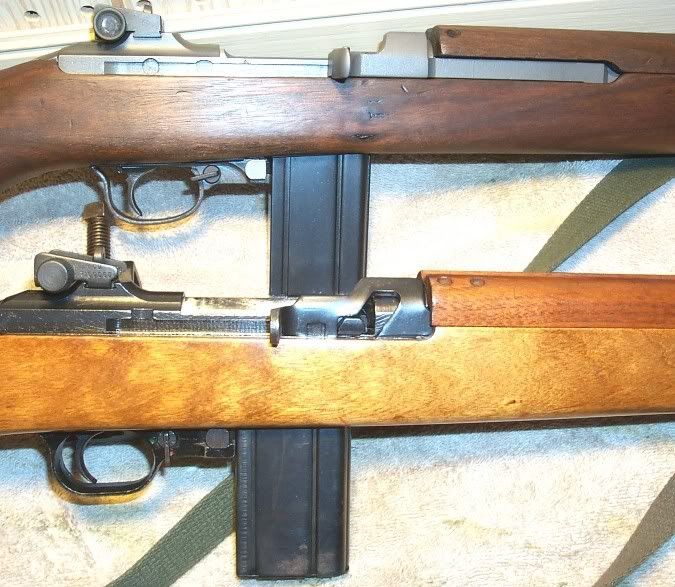
A view of the twin springs used on the Universal. I guess they thought more was better. It's not, it adds parts to break and it is a pain to take apart and reassemble until you do it a few times.
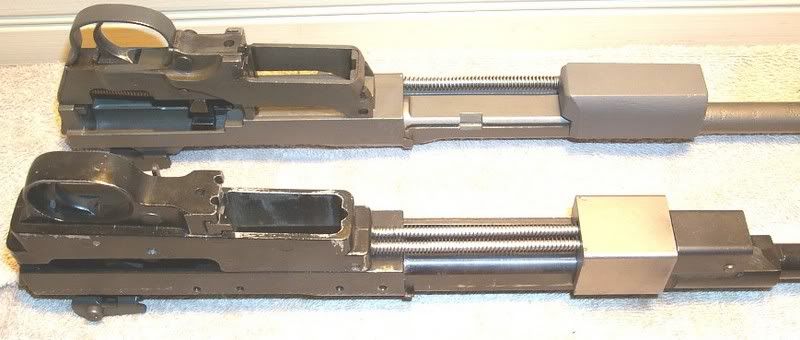
The WWII Carbine has one spring and it easily pops out and back in. The Universal has to have a cross pin removed (the same pin that holds the trigger group in place) that allows the two long rods to move back into the magwell thus allowing the springs to be removed. Now imagine putting them back in... you have to hold the rods forward (with the compressed springs around them) while holding the trigger group forward and then sliding the cross pin back into place. Real smart. You will swear it takes three hands until you muddle through it a few times.
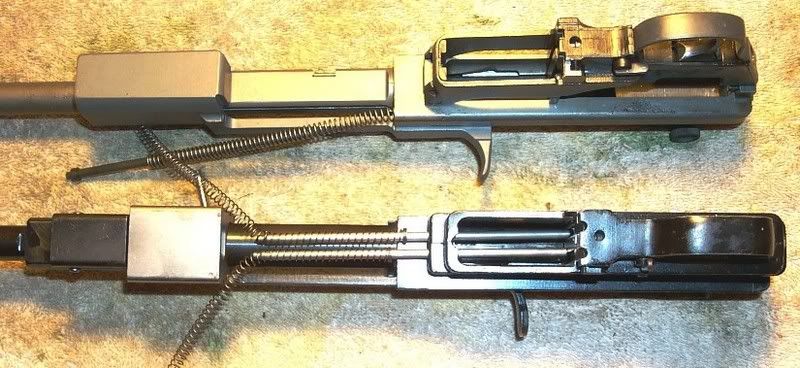
The trigger group slides off toward the rear once the cross pin is removed.

The trigger groups are very similar. That hammer spring is a serious pain to get out and back in too. This is the one place an improvement would have helped but they didn't change anything.
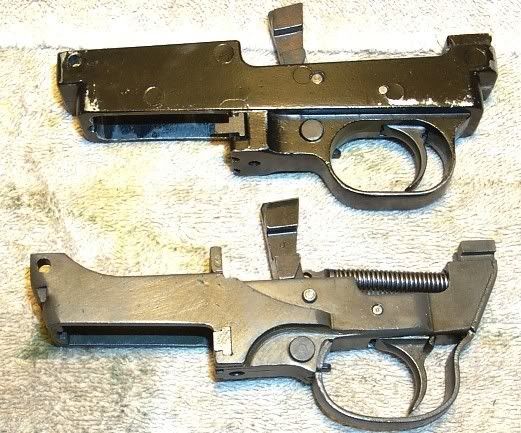
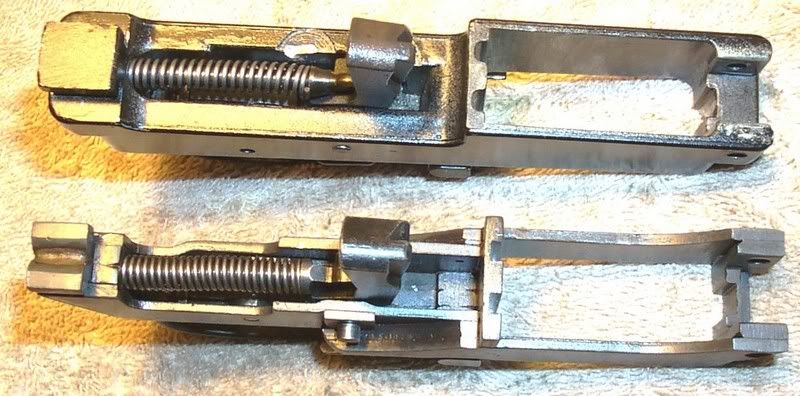
Some main components.
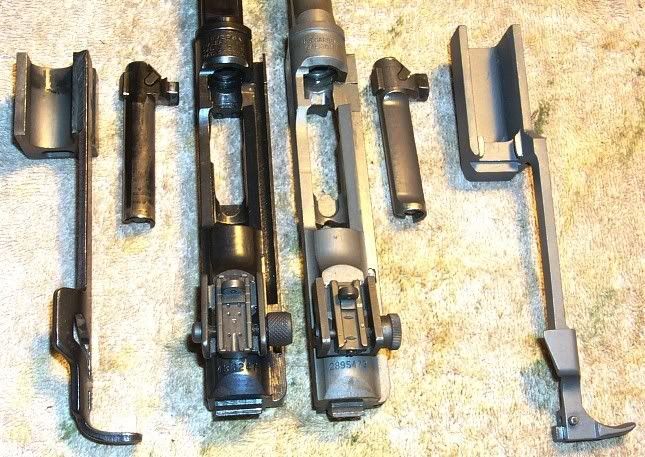
The different gas block and piston designs. The Universal uses a pin to keep the piston in place, the WWII used a treaded nut. You can see the powder residue that leaks around my Universals piston. On the right you can kinda see the pin at the back of the receiver that can be rotated and acts as a "bolt hold open". The WWII models just used a catch on the charging handle part of the slide. (as seen in the above pic)
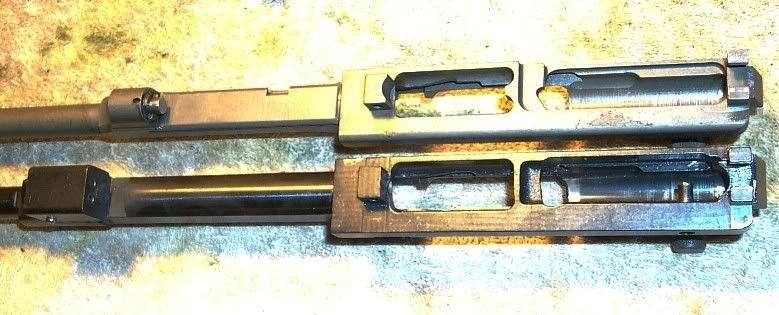
The far end of the gas blocks.
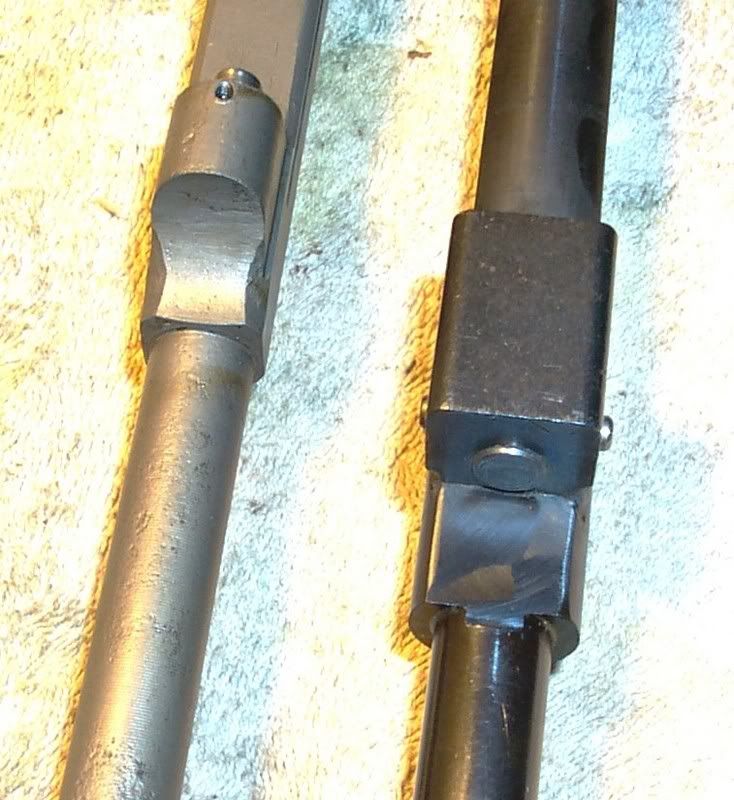
The same bolt tool works on both bolts... and YES, you want to own a bolt tool. Hours of swearing and crawling around on your hands and knees looking for the springs and bits can be avoided for $29.95. Ask me how I know.

The bolt redesign on the Universal includes a spring around the firing pin, I guess to stop an AD if the gun was dropped muzzle down. The tang on the WWII firing pin, when installed in the receiver, is near a "ledge" cut into the receiver that prevents the firing pin from moving forward unless the bolt is rotated at least 50% into battery. If you scroll back up, look at he weird cut of the hammer face, the back of the bolts are cut to match the hammer face cuts preventing the hammer from reaching the firing pin unless the bolt is rotated far enough. I was unable to make either gun pop a primered casing unless the bolts were at least 50% rotated into battery.
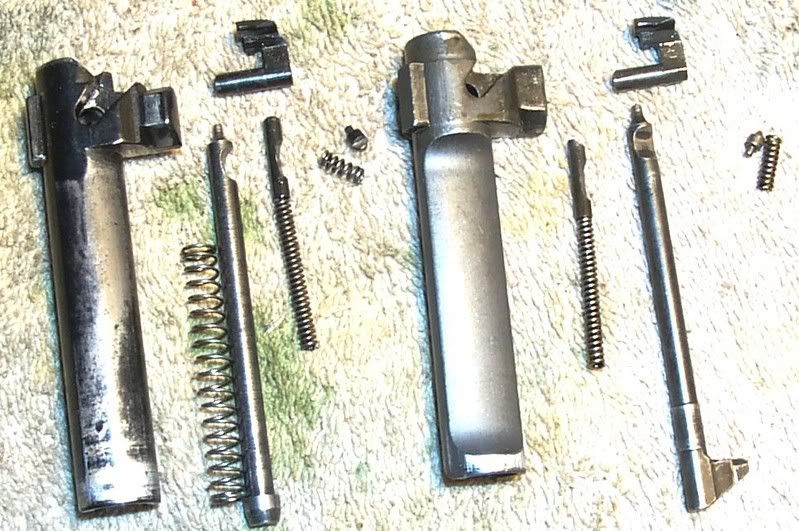
Closer look at the pin used for holding the bolt open.
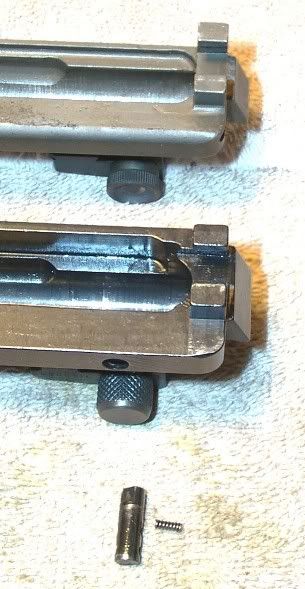
Closer look at the pistons.
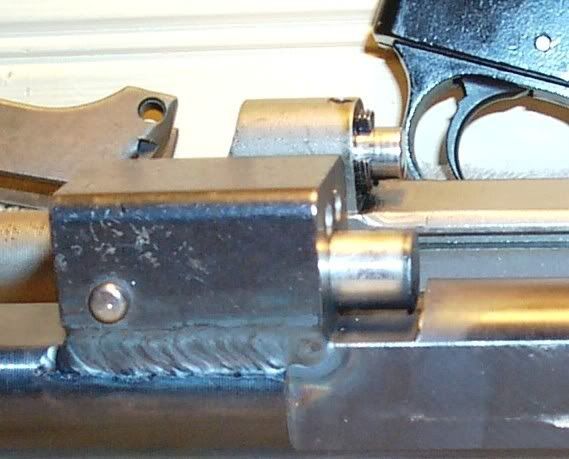
Receiver markings, rear sights, scope mount holes in the Universal.
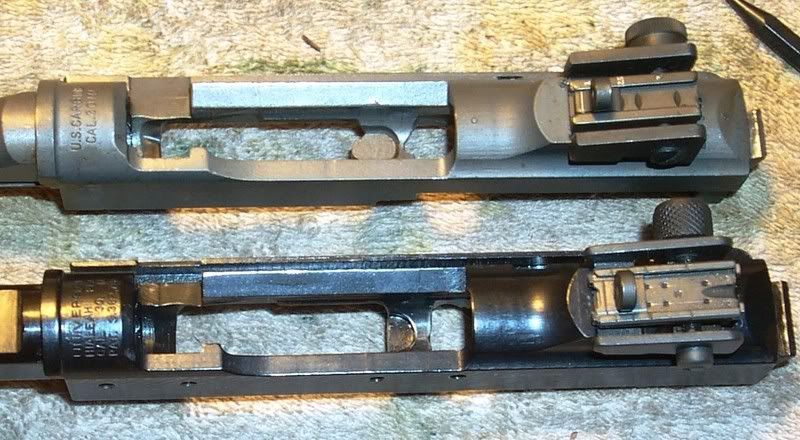
Side by side.
